Parallels RAS SAML integration
Multi-factor authentication (MFA) is an extra layer of security used when logging into websites or apps to authenticate users through more than one required security and validation procedure that only they know or have access to. Security Assertion Markup Language (SAML) is a protocol for authenticating to web applications. SAML allows federated apps and organizations to communicate and trust one another’s users.
Acceptto™, as a SAML provider, improves the user login experience for Parallels RAS users with smart convenient MFA.
Prerequisites
An Acceptto account with a configured Identity Provider and LDAP Agent.
For more information, see the LDAP Agent deployment guide.
A user with administrative privileges for the Parallels RAS server and console.
(Note : Visit Parallels website for implementation of the Parallels RAS server.)
Configure Parallels RAS as SAML Service provider
Download the SAML metadata and certificate for your organization from Acceptto.
Metadata Download at
https://sso.acceptto.com/<myorganization>/saml/download/metadataor view athttps://sso.acceptto.com/<myorganization>/saml/metadataCertificate Download at
https://sso.acceptto.com/<myorganization>/saml/download/certLog into your Parallels RAS server and open the RAS console. Then, navigate to Connection > SAML and click the + sign.

In the Add Identity Provider wizard, fill in the fields as below and click Next.
Name - an optional name like Acceptto
Use with Theme - choose Default
Import Published Idp metadata - insert the Acceptto’s Metadata URL
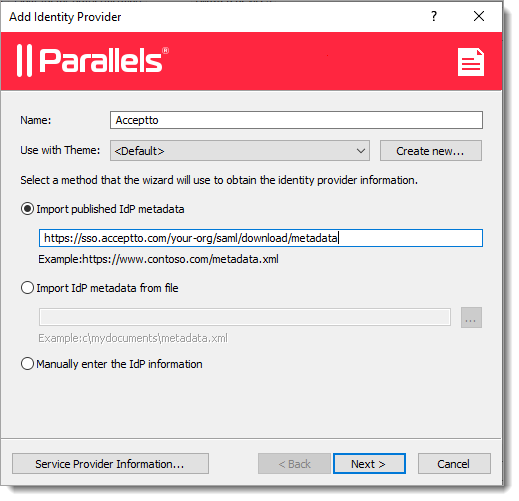
You will see the imported information on this page. Click Finish.
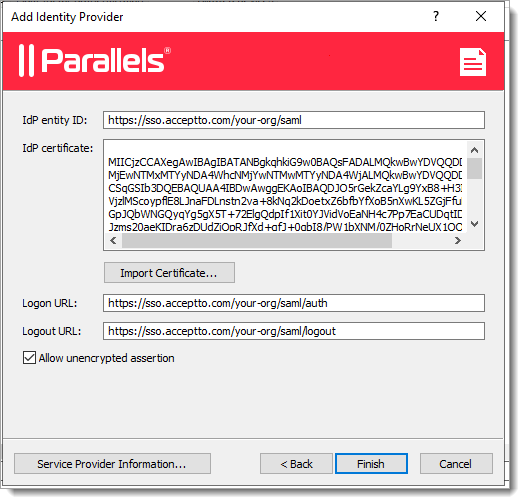
Click Apply on the SAML page.
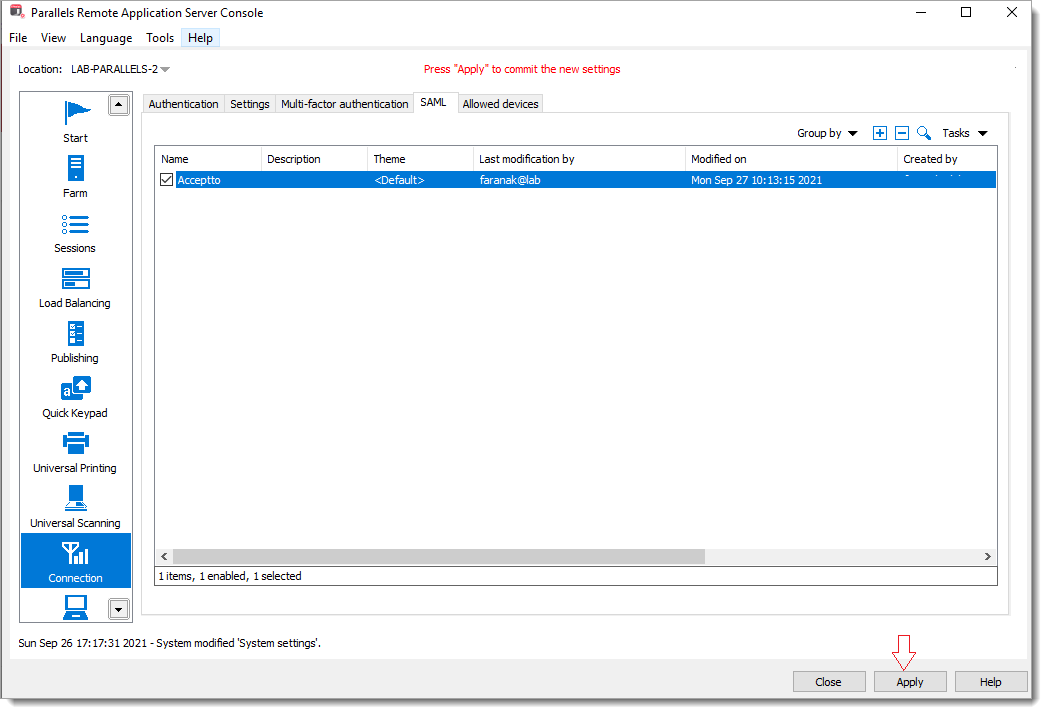
Right click on the Acceptto SAML connection and select Properties.
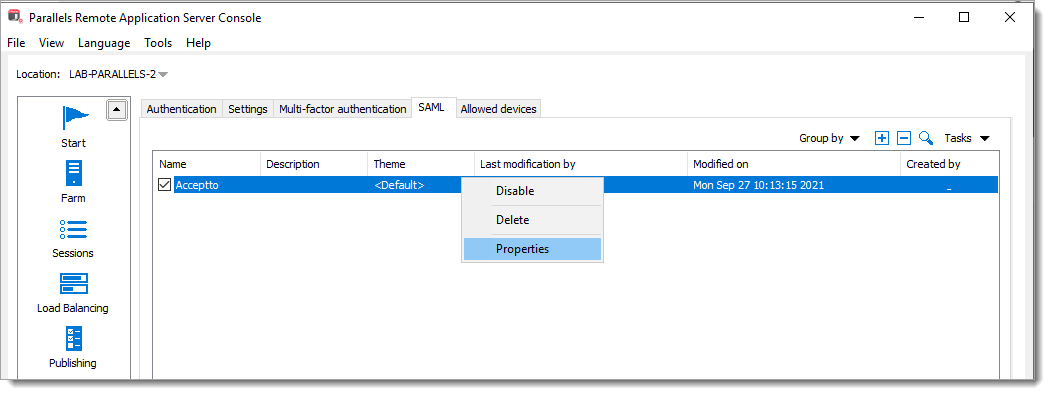
Go to the SP tab and note these URLs for configuring the Acceptto application in the next section.
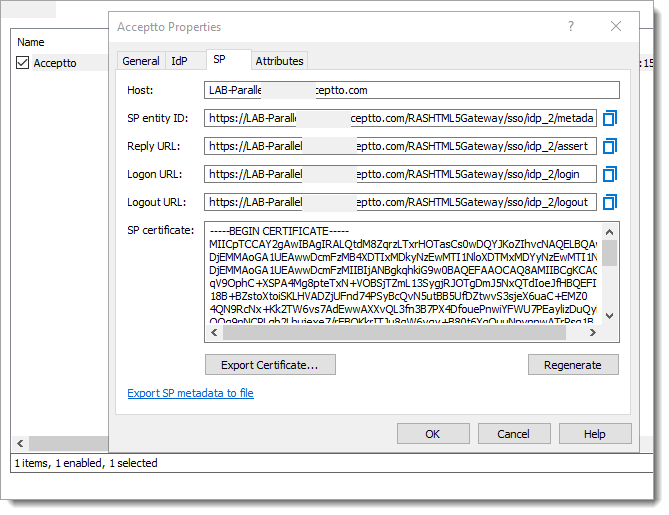
Go to the Attributes tab, select the last item which is called Custom and change the SAML Attributes to “emailaddress”. Click on OK, and then Apply.
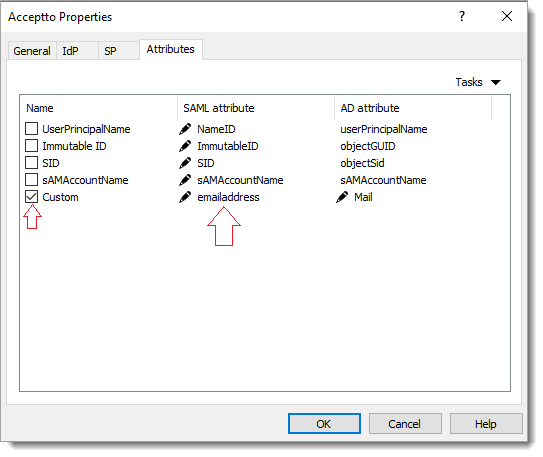
Acceptto SAML Configuration as Identity Provider (IdP)
Login to the Acceptto Dashboard with an administrative account and go to Applications.
Create a new application by selecting the Create New Application.
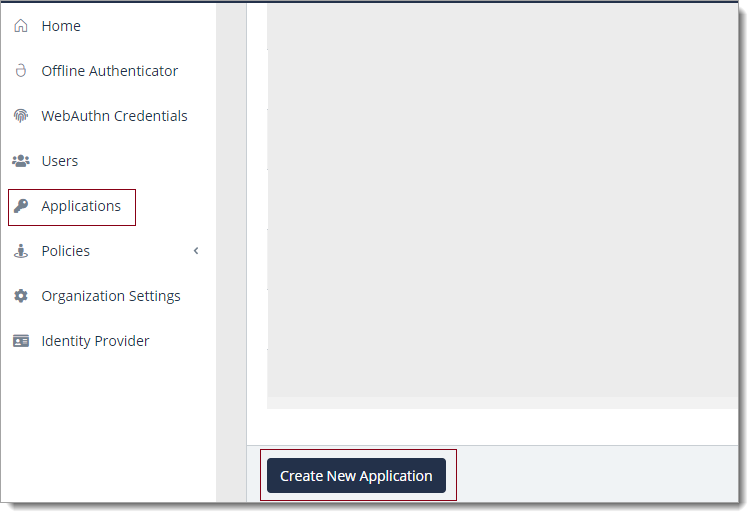
In the New Application form, enter the following values under the General tab:
Name - The application name displayed in the admin panel and application portal and used for push notifications and audit logs (e.g. Parallels)
Type - Select "SAML Service Provider" from the options
Out of Band Methods - Select the allowed methods for approving MFA requests
Message for MFA Requests - Enter the user-facing message for Push, SMS, and email MFA requests (optional)
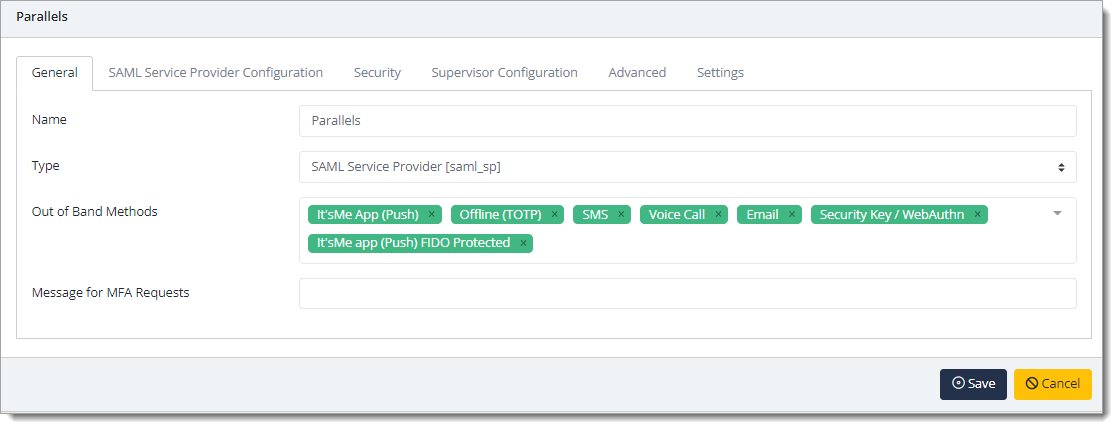
Under the SAML Service Provider Configuration tab, enter the following values:
Issuer or Entity ID – Enter the SP entity ID from Parallels console.
Sign in URL - Enter Logon URL from Parallels console.
NameID Format - Select "Email Address" from the dropdown menu.
Name Identifier - Select "Email" from the dropdown menu.
Assertion Consumer Service (ACS) URL -Enter Reply URL from Parallels console.
Single Logout URL -Enter Logout URL from Parallels console.
Algorithm - RSA-SHA256
Click the Add New Attribute Assertion button and enter the below information:
Friendly Name
Name
Value
Name Format
Email
emailaddress
mail
Unspecified
Check the Sign Message box.
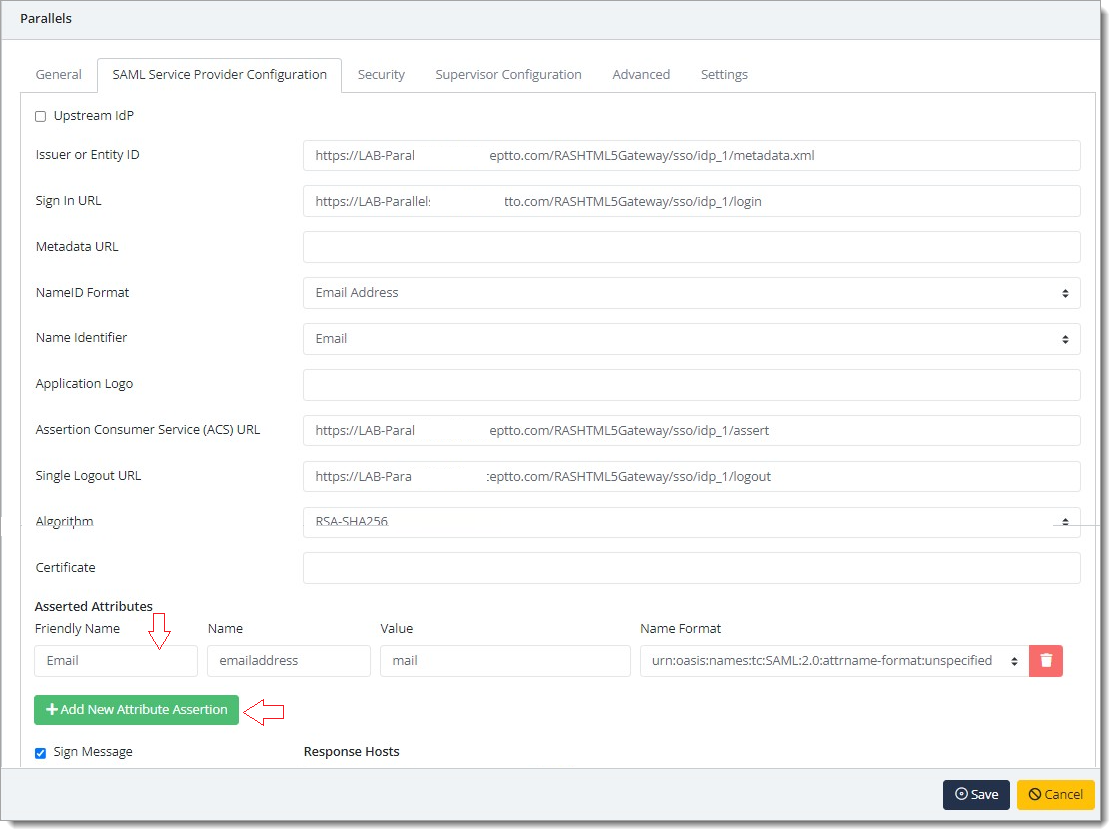
Click Save.
Test your application integration
Open a browser and go to the Parallels RAS gateway login page, e.g.
https://parallels.org-name.com/RASHTML5Gateway/You will be redirected to the Acceptto’s SSO page.
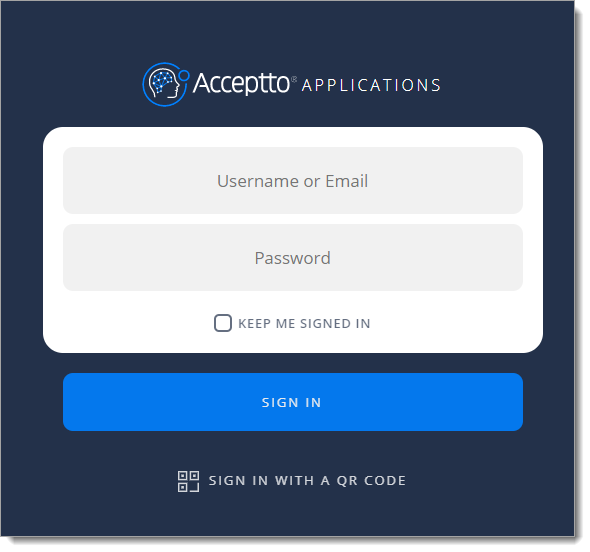
After successful authentication, you’ll see Acceptto’s MFA options. Select your desired method.
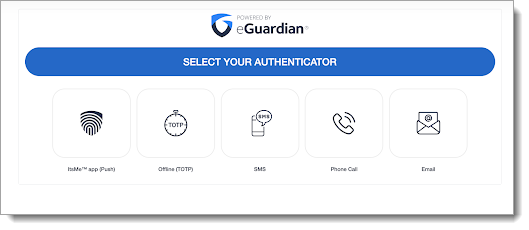
After approving the authentication attempt, you will be redirected to your Parallels RAS portal.
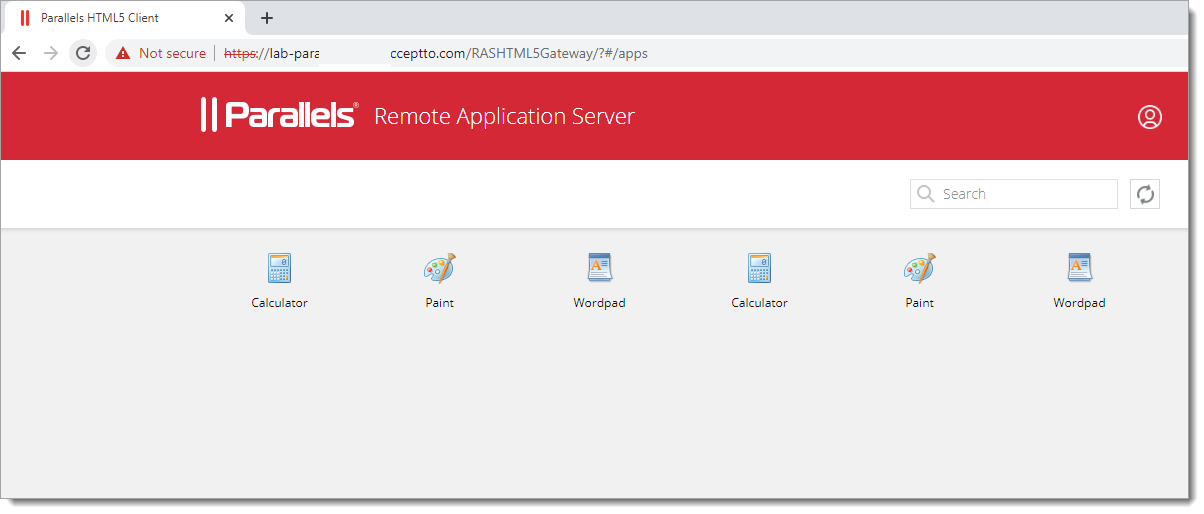
Support
If you have questions or need assistance, contact SecureAuth Support.
Sales
Want to learn more about our MFA solutions? Contact our Professional Services for a demo today.
Disclaimer
All product names, trademarks, and registered trademarks are the property of their respective owners.
All company, product, and service names used in this document are for identification purposes only. The use of these names, trademarks, and brands do not constitute an endorsement by the SecureAuth Corporation.